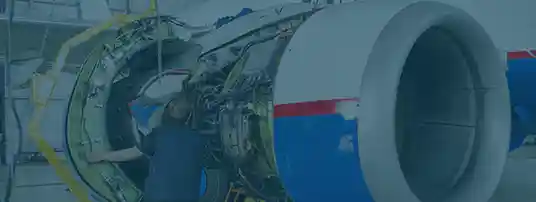Posted on November 6, 2018 linda strong aviation
Modern air travel is made possible through a series of complex aviation systems and safety mechanisms that are designed to ensure aircraft operate reliably under all circumstances. One such crucial component is the Auxiliary Power Unit (APU), which is a system specifically engineered to bolster engine redundancy and provide power support when it is needed most. While APUs do not contribute directly to propulsion, they play a critical role in maintaining essential aircraft functions during various phases of flight.
This blog will serve as a guide to APUs, exploring their functions, advantages, and operational contingencies. We will also highlight the importance of reliable sourcing for such equipment in the aviation industry, so read on to learn more.
An Auxiliary Power Unit (APU) is a form of compact, self-contained engine system that supplies power for aircraft systems when the main engines are not running. Most often located in the tail cone section of commercial and military aircraft, these apparatuses are essential for maintaining operational continuity and electrical power during ground operations and emergency situations.
APUs are regularly relied on to provide the initial burst of bleed air needed to spin turbines and ignite the main engines of an aircraft. Without an APU, external power sources like a start cart would be required, making operations potentially more complex or time-consuming.
APUs are regularly used to power air conditioning and lighting systems before engine startup, ensuring that cleaning crew can safely navigate spaces, customers are comfortable when entering, and systems can be tested as necessary.
In the event of an in-flight electrical failure, an APU can be used as a backup generator. In such situations, the system will provide power to essential flight controls, navigation equipment, and instrumentation.
While APUs are not essential to keeping an aircraft airborne, their role in redundancy is invaluable. As such, it is important to know what to do in the occurrence that an APU happens to fail.
If an APU fails before engine ignition, external tools like ground start carts will become necessary to deliver bleed air for starting. Flight operations may also have to be aborted if the issue poses a safety risk or is against regulations.
If an Auxiliary Power Unit (APU) fails mid-flight, the aircraft can still maintain operability. At this time, one may try to take advantage of engine cross-bleed, where one working engine can be used to restart the other. Otherwise, aircraft may try and attempt to descend to generate sufficient airflow to restart turbines.
Aircraft systems are designed with multiple backups and redundancies to ensure safety across numerous operational scenarios. APUs serve as an example that enables continuity when standard systems encounter faults. For example, redundant APU systems can provide benefits like:
To ensure reliability, APUs undergo rigorous testing processes that are designed to simulate a range of conditions to assess system performance under various pressures and altitudes. Common testing practices include:
In the demanding aviation industry, dependability and airworthiness starts with sourcing quality parts. That is why ASAP Semiconductor is proud to offer customers access to a wide range of high-quality avionics connectors and related components through its website, Aviation Sourcing Solutions. By working with leading global manufacturers and maintaining a robust inventory, Aviation Sourcing Solutions delivers tailored procurement options that help reduce the complexity of sourcing and fulfillment. With a team that prioritizes hands-on service, customers can meet all operational requirements with confidence on one convenient website. Get in touch with our staff today to discuss the solutions we can provide.

 The only independent
The only independent



“We Proudly Support Intrepid Fallen Heroes Fund that serves United States Military Personal experiencing the Invisible Wounds of War : Traumatic Brain Injury (TBI) and Post Traumatic Stress (PTS). Please visit website (www.fallenheroesfund.org) and help in their valiant effort”.
We Hope that You Will Visit Us Again the Next Time You Need Aircraft Parts and Make Us Your Strategic Purchasing Partner.
Request for Quote